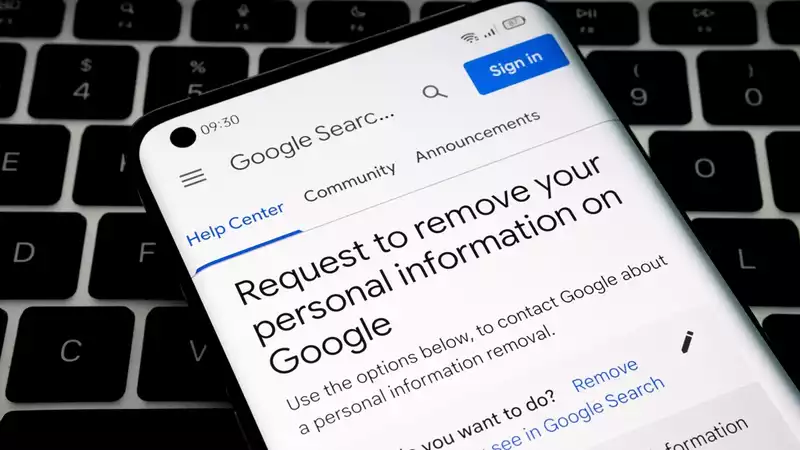If you are a public figure, a business, or own a personal brand, having an online presence is important. However, you may be concerned that your contact information, address, financial information, and other personal data will be exposed to strangers with just a few Google searches.
Fortunately, Google now offers two easy ways to delete personal data about you; for instructions on how to remove your personal information from Google, click here.
Privacy and security are the main reasons why you do not want your data to be public; other reasons why it is important to remove your data from Google include:
Privacy concerns: You may not want to make personal information such as your birth date, bank account, or address public. Removing this data from Google can reduce the risk of cyberstalking, identity theft, harassment, and other privacy-related risks.
Data security: Fraudsters can use your Social Security number, name, and other personal information for unauthorized access, phishing attacks, and data breaches. The smaller your digital footprint, the less likely you are to be a cyber victim.
Maintain a professional image: Sometimes information about you may be negative, inaccurate, or outdated. By removing these data, you can present a more professional and accurate picture to your followers, colleagues, and clients.
For Google to take action, your request must meet one of the following criteria:
Type your name in Google's search bar. When you find search results that contain your information, make a note of them. Copy these links into Notepad and take a screenshot of the results that violate your privacy.
Another good idea is to check Google Photos. Click on the Images tab on the search results page to find your image and other details attached to the image.
If a Google search finds relevant information about you, you can fill out Google's content removal form directly.
Step 1: First, choose from four options. Since you want to remove personal information, select the second option that says "Content contains personal information."
Step 2: Next, select your country of residence and click "Next."
Step 3: Next, select the type of personal information you wish to delete. Choices include address, phone number, email address, and any other information listed above.
Step 4: Next, you must specify whether the content you wish to remove was shared with malicious or threatening intent.
Step 5: On the last page, you will need to provide information such as contact information, email address, URL of the content you wish to remove, URL of the Google search results page, search keywords used, and screenshots of the referenced pages.
Step 6: After filling in all details correctly, click "Submit."
After submitting the form, Google will analyze your request according to its policy requirements and send you a confirmation link later.
However, if your information has been published on a government website or news article, Google will not remove it. Also, these steps are for removing content from search results; no matter how powerful, Google cannot remove web pages from the Internet. 35]
Step 1: From your Google Profile, go to "results about you " Go to your dashboard and click "Get Started.
Step 2: Google will provide a form with instructions. Carefully fill out the form and provide the correct information, including your name and at least one contact number.
Step 3: Once you have entered your details, click "Submit."
Step 4: Google will then look for a match for you in the search results. If something similar pops up, click on the "Request to Remove" tab near the search results.
After submitting the request, Google matches the details and verifies that the site is not owned by an educational or government institution. After a few days, the content will be removed. However, if Google rejects your request, you can resubmit it with more information attached.
Remember that Google can only remove your personal information that appears in search results. If a website contains your information, Google cannot remove it from the website itself.
In this case you can contact the website owner. The website may have an email address or a contact page. If the website does not list contact information, use a service such as Whois to find the domain and owner.
Once you find the website owner, politely request that the information be removed or updated. If the owner does not respond or is unwilling to remove the information, you can ask Google to remove it from search results (as described above).
Make a habit of occasionally searching Google for more information about yourself, such as your address, name, email, and phone number. By doing so, you can take timely action to prevent inaccurate or outdated details about you from being disseminated to the public.
You can also use Google Alerts. However, it is not always possible to completely hide your information from the Internet. Watch your online reputation carefully, as new sources may emerge.
Tools like the best VPN services can improve your anonymity online, but the most reliable way to keep your information private online is to post it as little as possible.
.









Comments